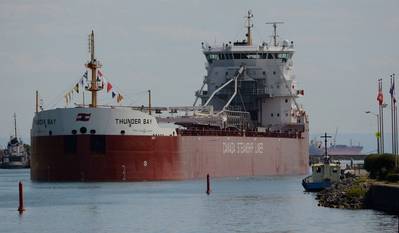As the debate continues both at home and abroad on carbon offsetting measures, the Chamber of Marine Commerce is urging stakeholders and governments to consider the environmental advantages and the competitive challenges faced by the Great Lakes-St. Lawrence shipping industry.
The call comes as the Ontario government develops details of a new cap-and-trade system to reduce greenhouse gas emissions and federal government negotiators head to Paris in December for the United Nations Framework Convention on Climate Change (UNFCCC) meeting.
Stephen Brooks, president of the Chamber of Marine Commerce, which represents more than 150 American and Canadian marine industry stakeholders, said some past Canadian and U.S. regulations arising from international environmental commitments didn’t properly differentiate between domestic and global shipping.
“Unlike the global shipping fleet, most domestic shipping competes directly with road and rail. The more we unnecessarily burden this short-sea shipping with extra costs, the greater likelihood this freight moves to less environmentally-friendly modes,” Brooks explained. “We also need to think about the negative impact of thousands, even millions of more heavy trucks on our overburdened highways and in neighborhoods where our families live, work and play.”
According to the Chamber of Marine Commerce, ships have the lowest carbon footprint per tonne-kilometer. A recent study conducted by Research and Traffic Group showed that rail and truck would respectively emit 19 percent and 533 percent more greenhouse gas emissions per cargo tonne-kilometer if these modes carried the same cargo the same distance as the Great Lakes-Seaway fleet.
Great Lakes-Seaway shipping supports 227,000 jobs and $35 billion in business revenues in Canada and the U.S., and contributes to the competitiveness of North American manufacturing, mining, energy and agricultural sectors.
Allister Paterson, President of Canada Steamship Lines, said, “Canadian ship owners are investing over $2 billion in new Great Lakes ships and technologies that significantly further reduce fuel consumption, greenhouse gases and air emissions.”















